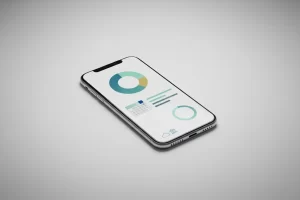What Was Your Most Challenging Hiring Decision, and What Did You Learn?
Navigating the complexities of recruitment, five seasoned leaders, including presidents and founders, share their most challenging hiring decisions. From the importance of a holistic skill set to the wisdom of choosing “culture add” over “culture fit,” these insights offer valuable lessons on the nuances of building a strong team.
- Holistic Skill Set Matters
- Balance Technical and Soft Skills
- Prioritize Cultural Fit and Communication
- Compensate Talent Fairly for Better Output
- Choose Culture Add Over Culture Fit
Holistic Skill Set Matters
Selecting the right candidate for a crucial role in our training department posed a significant challenge. I needed someone who not only possessed strong technical skills but also demonstrated exceptional communication and interpersonal abilities. Ultimately, I found a candidate who exceeded expectations in both areas.
This experience reaffirmed the importance of considering a candidate’s holistic skill set during the hiring process. It taught me that finding individuals who can effectively convey complex information while fostering engaging learning environments is essential for the success of our training programs.
Bradford Glaser, President & CEO, HRDQ
Balance Technical and Soft Skills
One of the most challenging hiring decisions I faced was when I had to choose between a candidate with impressive technical skills but poor communication abilities, and another candidate with average technical skills but excellent communication skills. In the end, I learned that communication is key in a team environment, and it’s better to hire someone who can effectively collaborate and convey their ideas, even if they may need some technical training, rather than someone who excels in technical skills but struggles to communicate effectively. This experience taught me the importance of finding a balance between technical expertise and soft skills when building a successful team.
Alex Stasiak, CEO & Founder, Startup House
Prioritize Cultural Fit and Communication
As the founder, I always try to hire someone who will seamlessly fit into our company’s working style with their abilities and experience. One of the most challenging hiring decisions I encountered was selecting a project manager to oversee a complex client engagement.
The candidate had an impressive track record and came highly recommended by industry peers. However, once onboarded, it became apparent that their communication style didn’t align well with our team’s collaborative approach. This led to misunderstandings and delays in project milestones, ultimately affecting client satisfaction.
From this experience, I learned the critical lesson of prioritizing cultural fit and communication skills during the hiring process, alongside technical expertise. Now, we emphasize thorough team interviews and scenario-based assessments to gauge how candidates handle challenging interpersonal dynamics and ensure they align with our company’s values of teamwork and client-centricity.
This approach has since led to more cohesive teams and smoother project executions, reinforcing the importance of holistic candidate evaluations in building a successful organization.
Aseem Jha, Founder, Legal Consulting Pro
Compensate Talent Fairly for Better Output
You get what you pay for when hiring in later-stage companies. Early on, you’re looking for quality and affordable talent. Mid-stage companies are looking for more experienced talent at a slightly more expensive rate. Late-stage companies are looking for A+ talent and will pay for it.
You get what you pay for at all of those stages—we learned early on that it’s pointless to try and negotiate the $5k–$8k salary discussions with too much energy. If the candidate wants $70k and your range was $65k, but you like the candidate, they’d be a good fit and would help you improve your day-to-day operations, then your opportunity cost is too high for that $5k difference in compensation to spend any more time thinking about it. Do it.
Our most challenging decision was “growing up” when it came to hiring. You know right off the bat after 10 minutes if the candidate is the right fit, and you know even sooner if they are worth the compensation range that you’ve set. From here, we learned really quickly that salary, benefits, and profit-sharing are great tools for negotiation and should be used accordingly (not sparingly).
The better you compensate your talent, the better work they’ll do, and the more money they’ll make the company. You’ll have higher output from that team member, along with them contributing in more ways than just client work—they’ll feel wanted and vested in what you’re trying to build.
Other important takeaways in hiring decisions:
- Just like when you know after 10 minutes if the person is a good fit, you know after a week of employment if the person is not a good fit.
- Ask tough questions and strongly encourage the candidates to interview you, too! It’s a two-way street—I’m not here to talk at you for an hour.
- You can train process and performance, but you cannot train personality and culture—choose what matters to you and your organization most.
Anthony Nichols, Founder, collystring
Choose Culture Add Over Culture Fit
I believe the most challenging hiring decision comes when a manager has the best hiring “problem” they can have: choosing between two amazing candidates. It’s comforting to know that either way, they’re going to hire someone great, but that doesn’t make the decision process easy. The biggest lesson that I’ve learned when it comes to making a difficult hiring decision is to consider one major key factor: culture add, not just culture fit.
In the past, I worked with a hiring manager who was evaluating two finalists for an engineering manager role. One of the finalists happened to share the same hometown and alma mater as the hiring manager; thus, the hiring manager became a little biased toward that candidate over the other.
As a recruiter, I had to challenge this bias by advising him to put the similar life experiences and good rapport aside and refocus on what important skills or traits the candidate possessed. I advised the hiring manager to prioritize the value the candidate would bring to the culture of the organization over the way they would “fit in” with the company.
We focused on which candidate could offer new perspectives, encourage creative and improved approaches, and bring innovative ideas to the role. By prioritizing these “value and culture adds,” the hiring manager identified the best possible person for the role, mitigated unconscious bias from the hiring process, and ultimately contributed to a more inclusive workplace culture.
Nikki Hardee, Senior Talent Acquisition Manager, Kevel







































